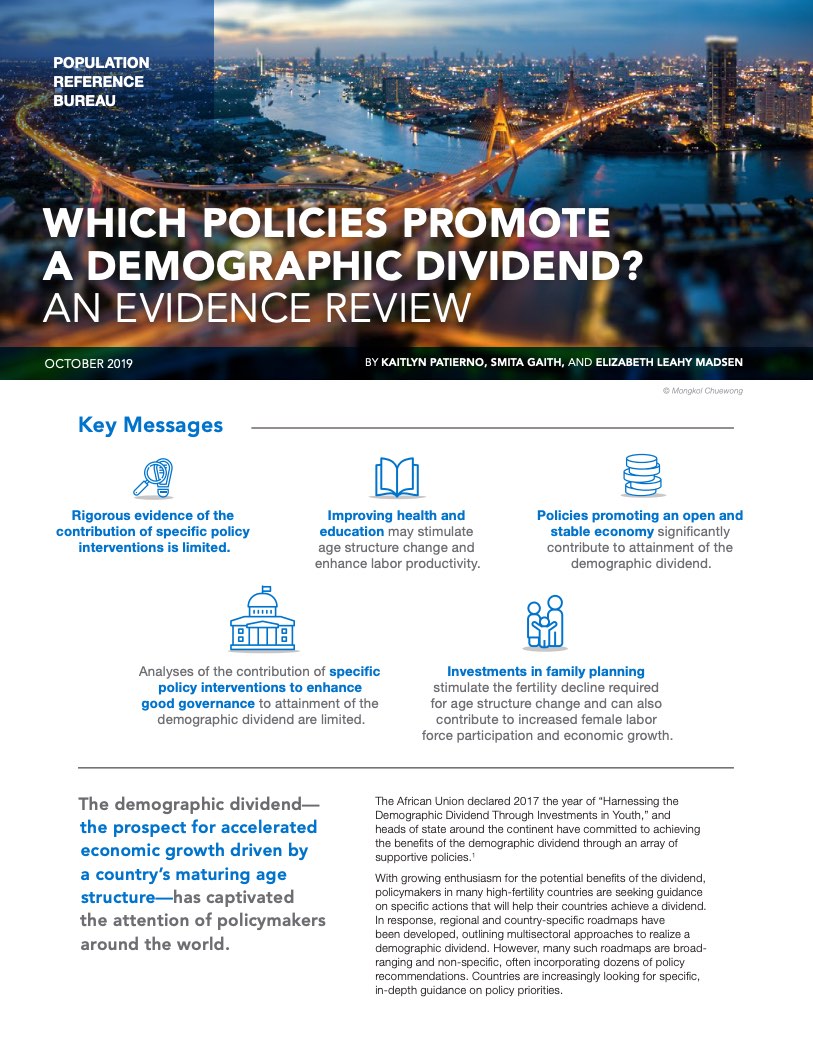
Which Policies Promote a Demographic Dividend? An Evidence Review
The demographic dividend—the prospect for accelerated economic growth driven by a country’s maturing age structure—has captivated the attention of policymakers around the world. The African Union declared 2017 the year of “Harnessing the Demographic Dividend Through Investments in Youth,” and heads of state around the continent have committed to achieving the benefits of the demographic dividend through an array of supportive policies.
The importance of improvements in health, education, the macroeconomic environment, and good governance for attaining the demographic dividend is well-documented in the literature. Less well-documented are the specific policy investments that enabled countries to achieve those improvements and capture the dividend. The relative contributions of those policy investments in resource-constrained environments where tradeoffs between investments may be necessary have not yet been defined.
This review aims to address these gaps by assessing the literature on specific policy interventions across sectors that explicitly contribute to achieving a demographic dividend. However, the findings suggest that evidence quantifying the contribution of various policy interventions to attain the demographic dividend is limited. The review does find evidence for the following policy interventions:
- Legalize contraception.
- Create a dedicated population and policy planning institution.
- Establish family planning service delivery and outreach.
- Invest in disease prevention and public health.
- Offer free public education.
- Provide inclusive access to financial services.
- Reinvest GDP growth in the working-age population.
- Develop open trade and pro-industrial policies.
- Encourage foreign direct investment.
- Create stable and secure administrative systems.
As countries continue to develop demographic dividend roadmaps and incorporate the demographic dividend into national development and vision strategies, it is important to continue to build and clearly articulate the evidence base for policy recommendations.

 ">
">


